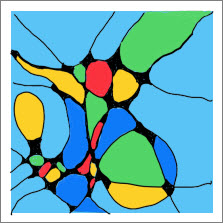These are not
easy times. Headlines are screaming. People are hiding from masked characters.
Prices are climbing faster than we can keep track. People, who have no criminal record, are being
placed in concentration camps. And the list goes
on. A lot of us feel helpless and hopeless. There's not much we can do except
go on an occasional protest march or write/call our congress representatives.
Simply said, it's scary.
But what if I
told you that there is something you can do to recapture your joy again, and it
won't require taking a magic pill. Plus, it shouldn't cost you much at all.
What is it you ask? It's ART. Not only visual art, which is my specialty, but
it also includes writing (creative/journal/mindful), music, dance or any number
of things that bring you joy.
Why art?
I used to think that the time I took to draw was frivolous. Something I would
do as a pastime. Nothing serious. Well, that's before I made visual arts a
full-time job. Now it's time well spent. Remember, I owned an advertising
agency--super stressful and often not fulfilling. My goal was to make money.
Business is business. Today my goal is totally different. Don't get me wrong, I
like an income, especially at this stage of my life. But what brings me joy and
purpose is putting pencil to paper or paint brush to canvas.
Art brings
joy.
This summer I worked on a painting project that completely knocked out the bad
news and delivered happiness. It's a floor mat. I bought this floor mat at
Costco because it had cushion and a non-slip feature. Unfortunately, within a
month or two it started to wear. So, I got my gesso out to prep the mat, pulled
out my acrylic paints, and painted what I call, "My Humble Garden."
See below.

This is no
masterpiece. It was just fun with no expectations. What happened though was it
became my escape place. Whenever I read or heard about something really
dreadful, I would find myself out in the garage working a bit more each day. It
took about month to complete--a little at a time, bestowing some grace upon me.
What do the
professionals say?
So what do the
experts say about doing art in challenging times? Here are a few statements I
found:
- Art helps express difficult
emotions. (Yes, I get this, maybe more in my writing than in
painting.)
- Art gives you an emotional release,
even helps to process trauma.
- One can find solace, peace and
insight from participating in art.
- Art becomes a coping mechanism,
helps to manage stress and anxiety. (This is absolutely true. I cannot
draw or paint and concentrate on the negative. I'm in a different zone.)
- Art gives you a sense of control,
especially if you don't have a perfectionistic goal (more on that later).
- According to the American Congress
of Rehabilitation Medicine, art increases serotonin levels, blood flow to
the brain and can foster new ways of thinking.
Perfection
One of the
biggest stumbling blocks in art is perfection. I like what Michael J Fox once
said, "Perfection is God's business." Exactly. What's holding you
back? Not thinking you can draw or paint or play an instrument or dance? Regarding
visual arts, it only takes a pencil and some paper. Scribble. Doddle. Play. Use
a variety of tools--markers, crayons, color pencils. Have no goal, just let
yourself go wild. In time, you'll want to do more. You can always go over to my
YouTube Channel
and learn how to draw a sphere from a simple circle. It's a good beginning. There are
other lessons you can try as well.
But
whatever you do, get going and make art. It helps, ALOT
------------------------------------------------------

Fall 2025
All classes are
closed for the rest of the summer. Next set of classes will begin Wednesday,
September 17th and go through October 15th. The second Fall session will run
from October through early December. Here's the schedule:
Back to
Basic Drawing
September
17-October 15, 2025
Beginning
& Intermediate Acrylics
October
29-December 3, 2025
The above
classes are currently in the planning stages, but if you are interested, please
let me know at jjgoodell@gmail.com. I'll make sure to contact you
when everything is put together. Our Wednesday group is a great place to feel
safe, encouraged and loved.








.jpg)



%20(1).jpg)
















